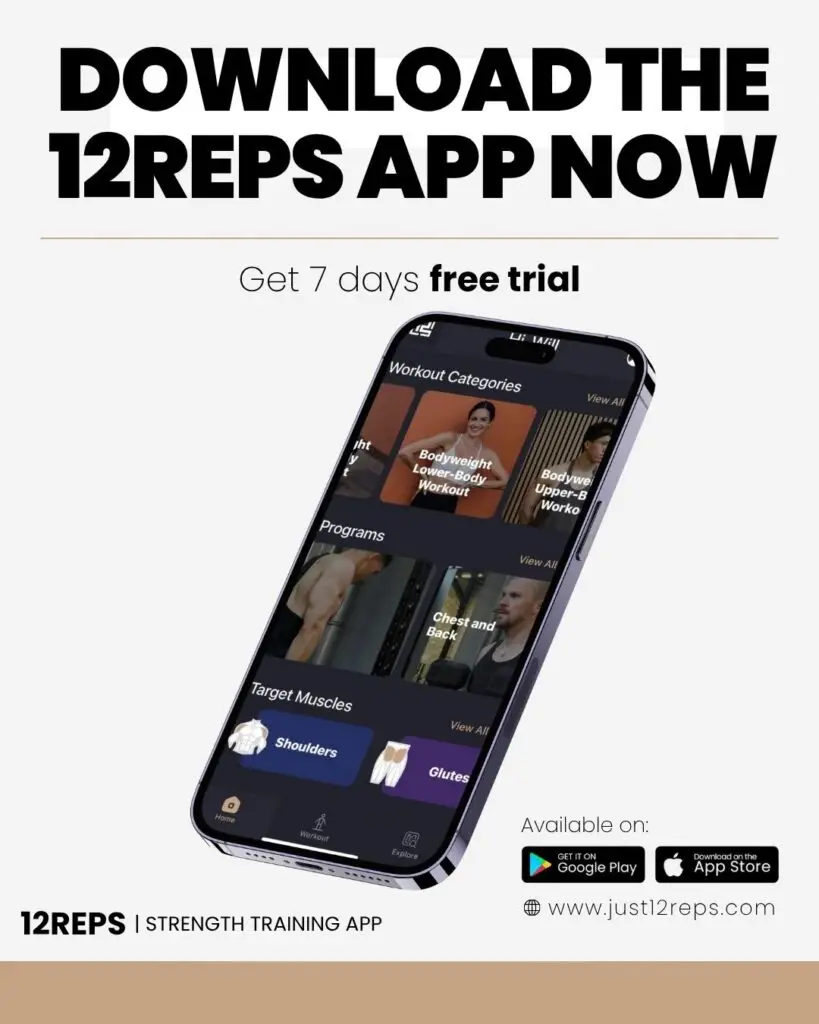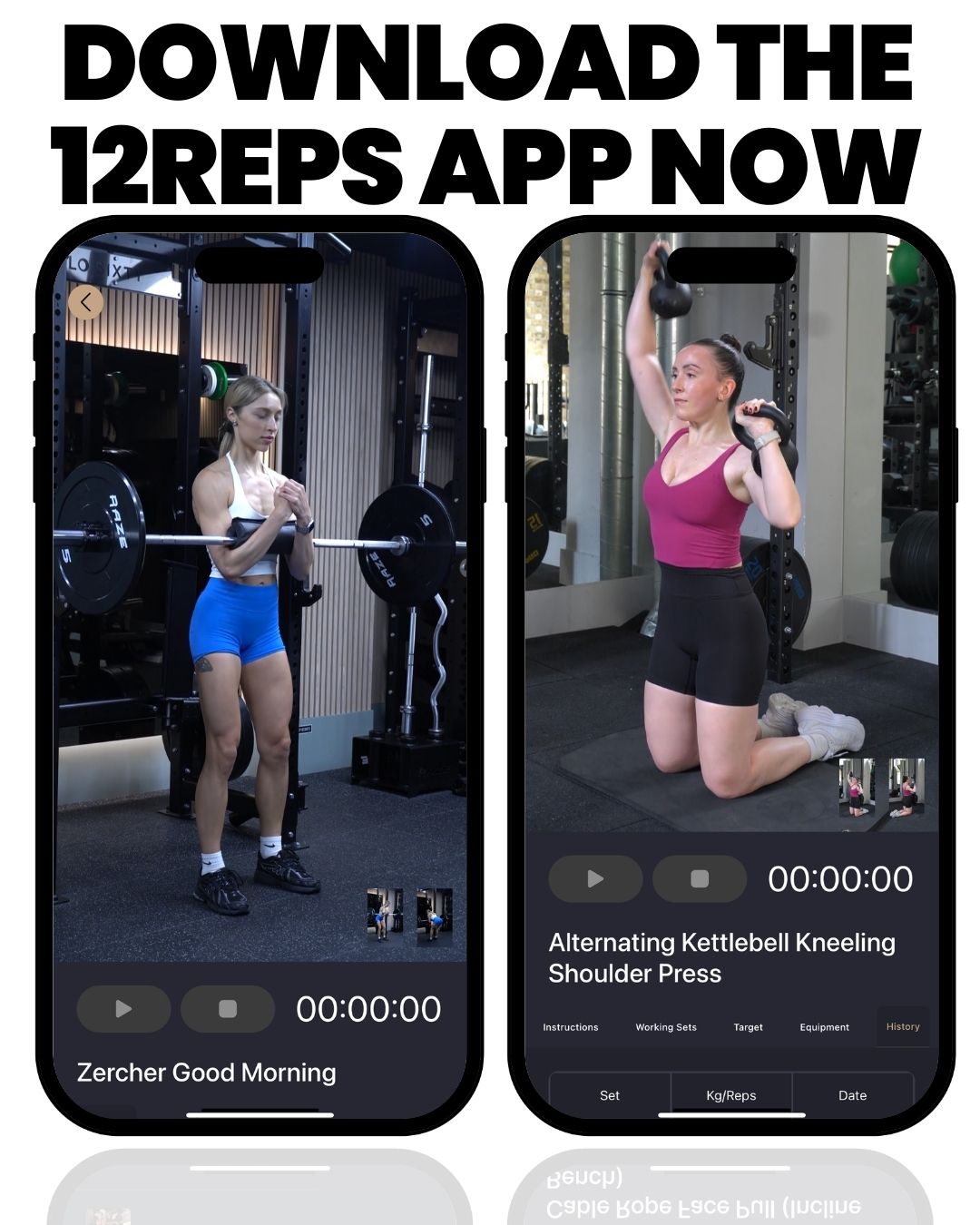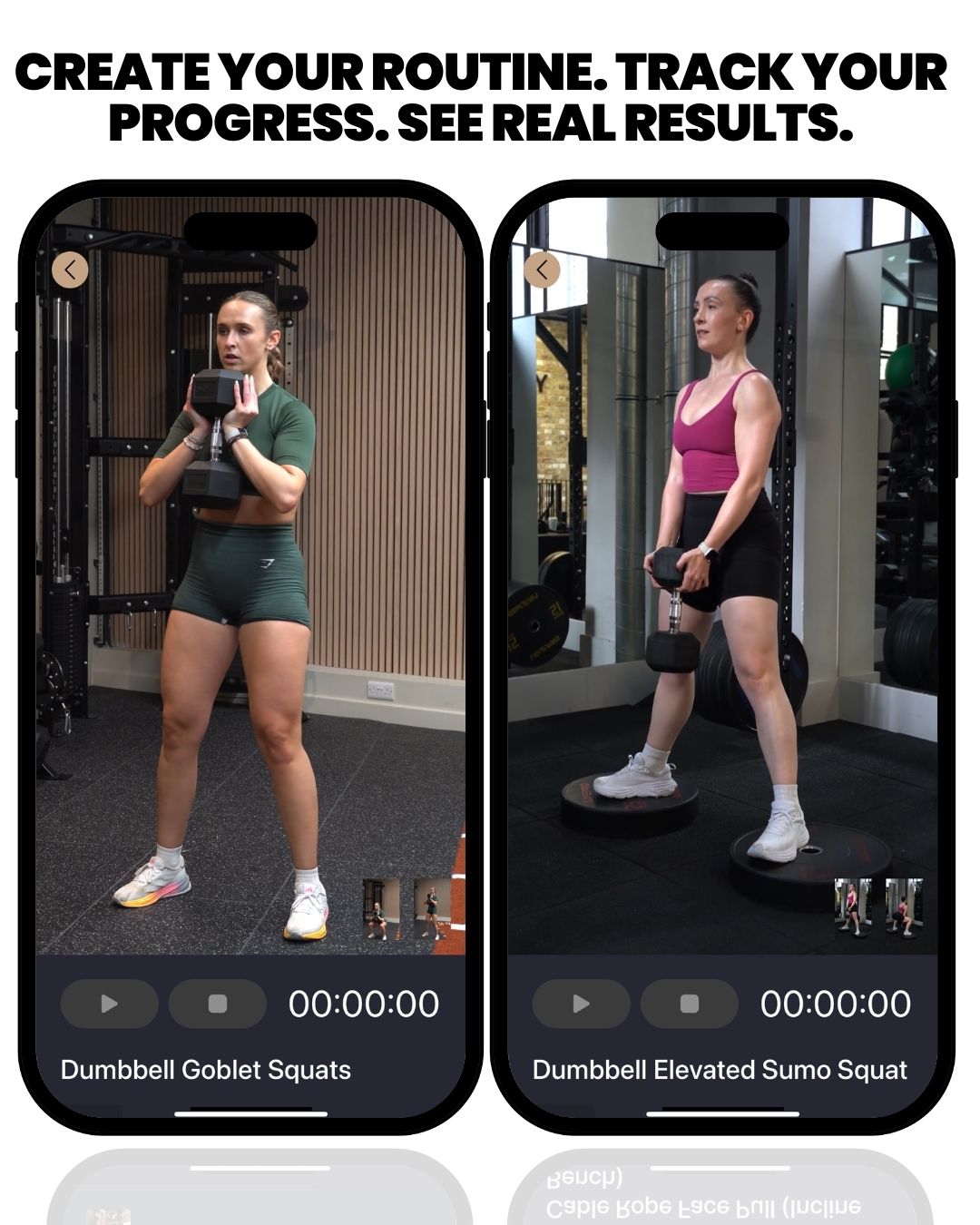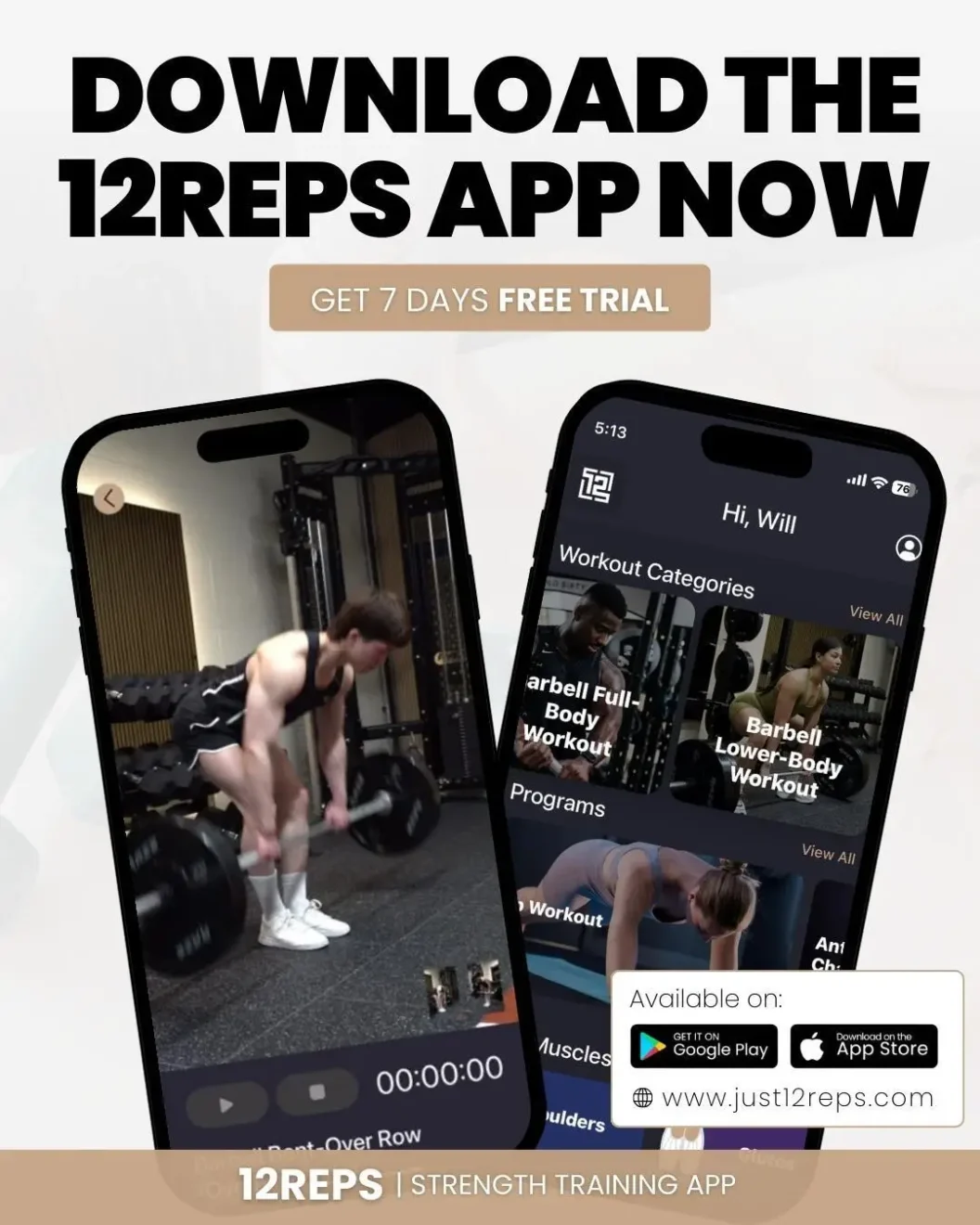By Will Duru, BSc (Hons) Sport and Exercise Science, Award-winning Personal Trainer with over 10 years of experience in strength training and optimising recovery
Are you ready to move some serious iron? If you want to get stronger, you can’t just show up and hope for the best; you need a plan. Every elite lifter follows a structured program, not random workouts. As 12REPS warns, “Without structure, progress stalls. You risk frustration, injury, or months of wasted effort”. In other words, a weight-lifting planner and tracker turns chaos into results. The Mayo Clinic notes that knowing your starting point and tracking progress helps you set better goals and stay motivated. A tool like 12REPS gives you exactly this: a place to schedule your workouts, log every set, and see every milestone. With the right planner/tracker, you’re not guessing; you’re following a proven path to get stronger.

Why Every Lifter Needs a Plan and a Logbook
The Power of Periodisation
Periodisation means organising you’re training into planned cycles that focus on specific goals. Instead of winging it each session, you divide the year (or even multiple years) into blocks, microcycles, mesocycles, and macrocycles – that build strength, size, and power step by step. For example, one macrocycle might span a full year, or even four years if you’re aiming to peak for an Olympic Games. By using periodisation, lifters build up intensity gradually and reach peak strength at the right time. A weightlifting planner is essential here: it helps you map out when to increase weight, when to back off, and when to recover. By following a periodised plan on paper (or in an app), you stay on track week after week, rather than hitting plateaus.
Tracking Your 1RMs and Personal Bests
Your one-rep max (1RM) and other personal records are your milestones. A 1RM is the heaviest weight you can lift for one clean rep. “A one-rep max is the maximum weight you can lift for just one repetition with good form,” explains a strength coach. Tracking these maxes over time is crucial. As NASM notes, “knowing your one rep max allows you to track progress and set goals”. It becomes the reference point for your training: coaches will often program workouts using percentages of your 1RM to make sure the load is heavy enough to build strength but not so heavy that you break form. With an app, you don’t have to do the math; 12REPS, for instance, will automatically calculate your evolving 1RMs and chart them. This way, you can see exactly how your strength has risen over weeks and months. Tracking personal bests also boosts motivation: each new PR is a concrete sign that your training is working.
Staying Injury-Free Under the Bar
Training hard is important, but smart programming keeps you healthy. Heavy lifting without rest leads to overtraining, fatigue, and injuries. Experts warn that too much intense training without adequate recovery can “hinder your progress, and even lead to a decline in your performance”. A good weightlifting plan prevents this by building in deload weeks and rest days. A workout tracker further helps by logging every workout, so you can spot warning signs early. For example, if your squat numbers stall for a couple of weeks, it may mean you need extra recovery. A planner lets you monitor weekly training volume and intensity. If those climb too fast, you’ll know to back off before you burn out. In short, planning and tracking go hand in hand for injury prevention: you avoid doing too much too soon and adjust your program based on data, rather than guesswork.
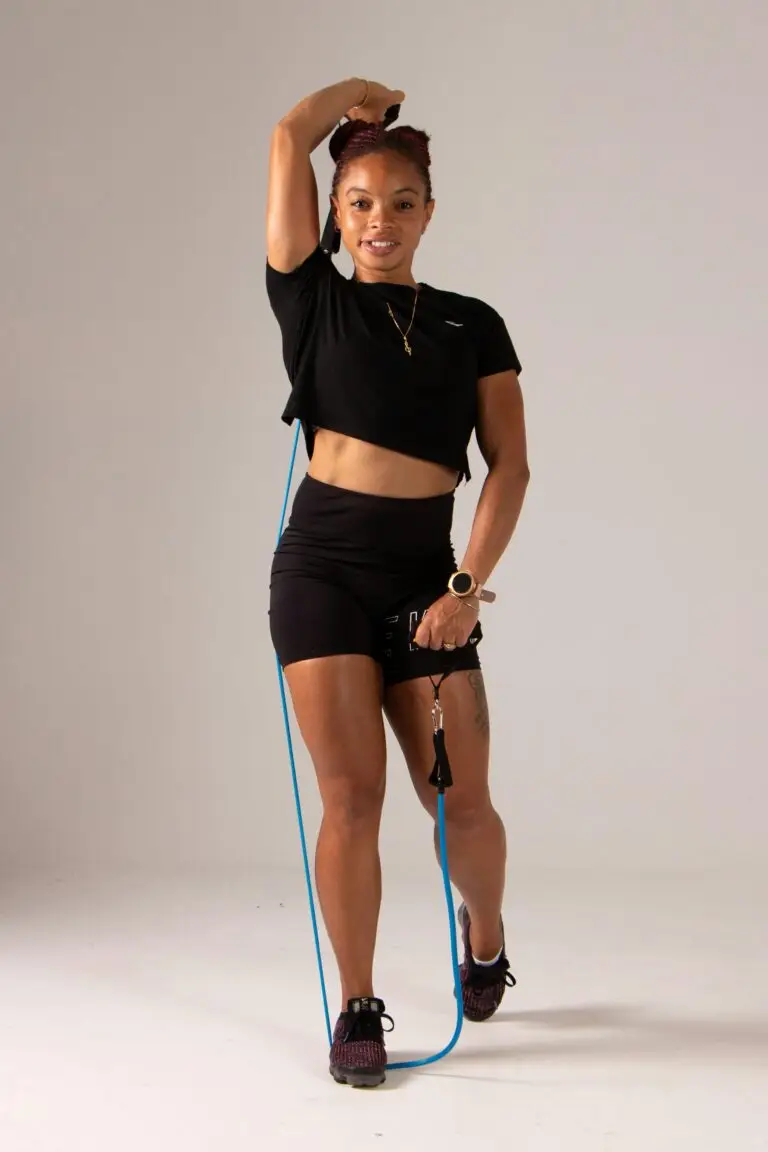
What to Look for in a Weightlifting Planner and Tracker
Advanced Programming Features
Serious lifters need more than a simple stopwatch. Your planner should support advanced programming methods: percentage-based loading, RPE/RIR auto-regulation, drop sets, supersets, and custom progressions. For example, you might want to run a 5/3/1-style program with percentages of your 1RM or use RPE (Rate of Perceived Exertion) and RIR (Reps In Reserve) to auto-adjust intensity each workout. The benefit of RPE/RIR is that they let you autoregulate your training day-to-day based on how you feel. One strength coach explains that using RPE/RIR lets you “choose weights appropriately for how you feel that particular day rather than having to rely on a percentage that may not take into account undulating strength levels”. In practice, that means if you’re well-rested, you can push a little harder (a higher RPE) and if you’re tired, you naturally dial it back, without breaking your plan. 12REPS supports all these methods: its AI-powered plans and workout builder let you specify percentages or RPE targets, and it calculates the exact weights for you. This way, you get the structure of a periodized plan and the flexibility of autoregulation in one app.
A Comprehensive Library of Lifts
Your app’s exercise library should cover every lift you need. All major barbell, dumbbell, and kettlebell movements, especially the big compound lifts, must be there. Compound exercises (like squats, benches, and deadlifts) are the foundation of strength. These multi-joint moves recruit many muscles at once, so they build strength most efficiently. “A good example of a compound exercise is the squat,” notes Peloton instructor Assal Arian. “It uses many muscles in the lower body… as well as engaging the core and lower back”. In other words, focusing on the big lifts pays dividends. 12REPS’s library includes 1500+ exercises, with video demos and descriptions for each (covering all the big barbell lifts plus hundreds of variations). This means you’ll always find the exact squat, bench, deadlift, or accessory movement you need, and get a guide on proper form. A large database saves time, prevents confusion, and helps you plan a well-rounded routine of compound lifts and useful assistance exercises.
Detailed Analytics for Serious Lifters
Good data unlocks better training. Look for analytics that go beyond just logging. Key metrics include total training volume (sum of all weight lifted), intensity trends, and progression of PRs. Serious athletes often track their weekly or monthly “tonnage”, the total weight lifted, because more total volume generally leads to gains. Modern trackers make this automatic. For example, after a few weeks, 12REPS can plot graphs of your total volume over time, or show your monthly tonnage, so you literally see your workload. It also highlights plateaus: if an exercise stops improving, the app will graph it so you know to adjust your program. Historically, Olympic lifters meticulously logged tonnage and PRs to ensure they were on track. Today’s apps do the math for you. With detailed stats, 1RM trends, volume totals, and per-muscle breakdowns, you get a full picture of your training. This level of insight turns raw workout logs into a “personal coach”, showing clearly what’s working and what to adjust.

How to Design a Killer Weightlifting Program with 12REPS App
Step 1: Choose Your Primary Lifts
Every training day should start with one or two heavy, compound lifts, your “big three” or similar. Typically, these are the back squat, bench press, and deadlift, as they recruit most of your major muscle groups and yield big strength gains. (Overhead press is also a great heavy lift for upper body push strength.) For instance, the squat alone targets the quads, hamstrings, glutes, core, and more. Pick one primary lift per day and give it priority in your plan. If you’re following a split, maybe Monday is Squat day, Wednesday is Bench/Press Day, and Friday is Deadlift Day. Use 12REPS to schedule these main lifts and assign them the highest intensity or weight for that session. Always choose your primary exercises first, these form the backbone of the program. Everything else (accessories, machines, etc.) is secondary support.
Step 2: Select Your Assistance Exercises
Once you have the main lifts, add accessory moves to target the same muscle groups and address weak points. For example, if you’ve squatted, you might follow with lunges, leg presses, or hamstring curls to build quads and hams further. If you’ve benched, pressing overhead, dips, or rows can strengthen shoulders and triceps. For deadlift day, Romanian deadlifts, back extensions, and trap work can reinforce posterior chain strength. The idea is simple: supplemental lifts are chosen to enhance your main lifts, making them stronger or more technically proficient. In 12REPS, you can browse the exercise library by category. Just tap to add an exercise – say “Romanian Deadlift” under Deadlift Day, and log sets for it. Effective accessory work balances muscle groups, corrects form breakdowns, and builds muscle size. For each primary lift, pick a couple of complementary exercises, and let 12REPS keep track of them just like the main lifts.
Step 3: Program Your Sets, Reps, and Intensity
Now it’s time to fill in the details. Your sets, reps, and weights depend on your goal. If you’re training for strength or power, use heavier loads and lower reps: typically, 3–5 sets of 1–3 reps at 85–100% of 1RM. If you’re focused on muscle size (hypertrophy), use moderate weight and more reps: 3–5 sets of 6–12 reps at 65–85%. (Powerlifters might also include explosive or dynamic work if training for powerlifting technique.) The easiest way is to decide on a scheme (for example, “5×5 at 80%” for strength, or “4×10 at 70%” for size) and then enter that into the planner. 12REPS can handle both percentage-based and RPE-based programming. You might set a target intensity of RPE 8 for a 5-rep set, and the app will suggest the weight you should lift. Or enter an exact percentage and let the tracker do the math. The tool even suggests a rate of progression each week (e.g. add 2.5 kg each session) so you’re always pushing forward. In short, use percentage or RPE to prescribe your intensity; both methods are supported, and log your actual sets and reps in 12REPS. The app will automatically track your progress toward each rep and set a goal.

12REPS: The Ultimate Tool for the Modern Weightlifter
Built for Strength
12REPS isn’t a generic fitness tracker; it’s built specifically for lifters who want to get strong. The app “eliminates the guesswork” by crafting workout plans tailored to your equipment and goals . In practice, that means 12REPS can auto-generate a periodized strength program for you: it will schedule squat, bench, and deadlift days, set intensities each week, and adapt as you update your progress. Powerlifters and serious athletes will appreciate the advanced features: it supports percentage-based templates, RPE/RIR logging, custom workout splits, and even complex techniques like drop sets or rest-pause. Every exercise entry comes with video demonstrations and tips, ensuring you maintain proper form.
Whether you’re a beginner or an elite lifter, 12REPS scales to your needs. Newcomers receive guided workouts and easy tutorials; experienced athletes can log multi-year histories of raw data. You can mark lifts as PRs, adjust your 1RM settings, and watch the app highlight when it’s time to push harder. As one personal trainer says, 12REPS is “truly embodying what a personalised AI-powered trainer should be. It eliminates guesswork” by offering smart, adaptive plans for your goals. In short, 12REPS gives you the same kind of structured, expert-backed programming that champions use, all in your pocket, making it the go-to tool for anyone serious about getting strong.
Join a Community of Lifters
You’re not in this alone; 12REPS includes social features to keep you motivated. You can connect with friends or other users, post your workouts, and celebrate lifts together. Imagine seeing your training partner hit a new squat PR in the app feed; it’s a real push to hit your own goals. Likewise, you can inspire others by sharing your deadlift wins or personal records. The app also runs group challenges and weekly leaderboards. Research shows that social support and accountability greatly boost adherence to training, and 12REPS brings that community vibe to weightlifting. Instead of training in a vacuum, you get cheerleading (and friendly competition) from a global lifting crew. This social element makes sticking to your plan easier: if your community is watching, you’re far more likely to show up and log that workout. It turns every gym session into a shared experience – and that camaraderie helps you push harder and stay consistent.
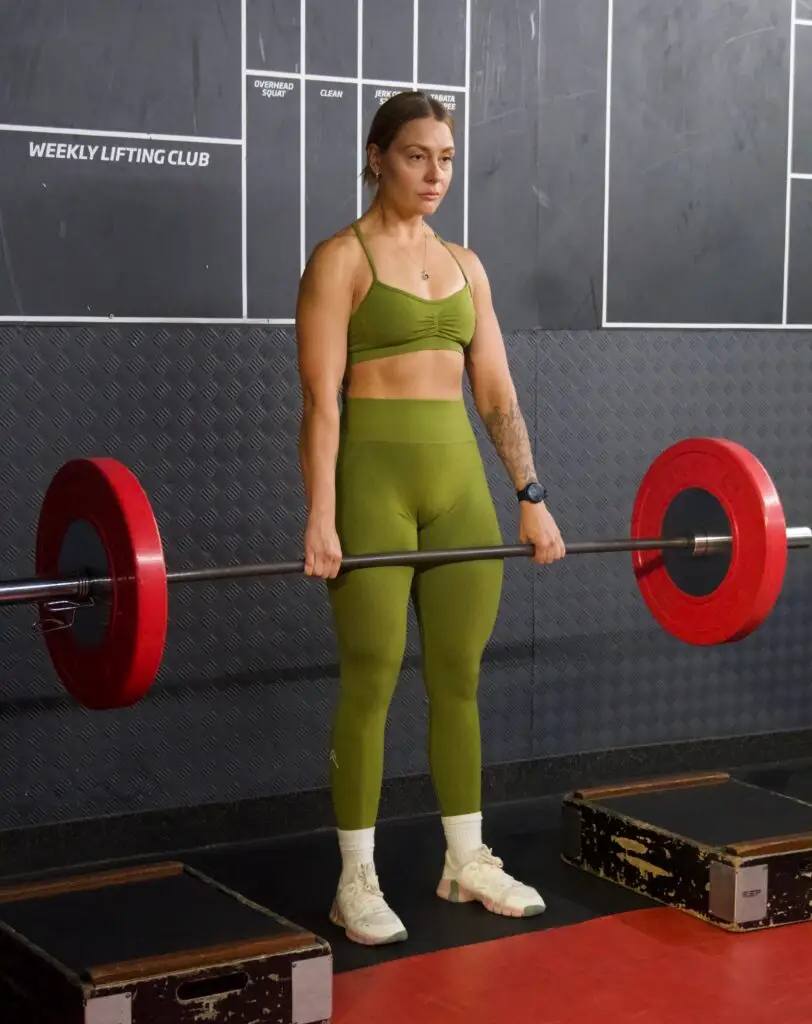
Conclusion
Building strength takes a plan. To get results in the gym, start with big compound lifts, arrange them in a periodized program, and track every detail of your workouts. Logging your lifts, reps, and weights is not optional; it’s how you see progress and make informed changes. With periodisation, 1RM tracking, and smart rest built in, you dramatically cut your chances of plateaus or injury. 12REPS ties all of this together in one app. It’s the all-in-one weight-lifting planner and tracker designed for people who want real strength gains. Using 12REPS, you schedule your workouts, log every set, and unlock analytics that show you exactly how far you’ve come. It’s the indispensable tool for any serious lifter. Ready to add more plates to the bar? Download 12REPS and start your free trial today – your strongest self is waiting.
